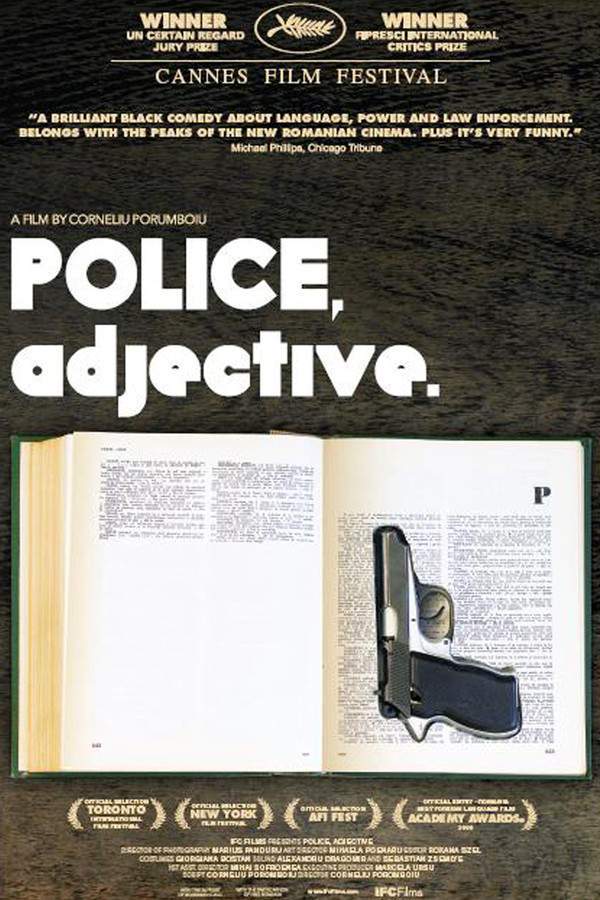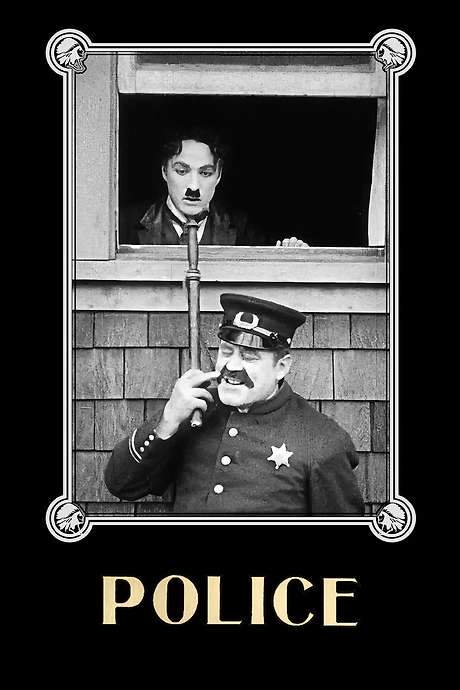
Ask a Policeman
Year: 1939
Runtime: 83 mins
Language: English
Director: Marcel Varnel
Police‑Sergeant Samuel Dudfoot and his two constables, Albert Brown and Jeremias Harbottle, launch a comically staged crime‑wave to protect their positions, only to have their contrived scheme collapse when a genuine criminal enterprise emerges, dragging the trio into a real investigation.
Warning: spoilers below!
Haven’t seen Ask a Policeman yet? This summary contains major spoilers. Bookmark the page, watch the movie, and come back for the full breakdown. If you're ready, scroll on and relive the story!
Ask a Policeman (1939) – Full Plot Summary & Ending Explained
Read the complete plot breakdown of Ask a Policeman (1939), including all key story events, major twists, and the ending explained in detail. Discover what really happened—and what it all means.
On a radio broadcast from Turnbotham Round, Will Hay as Sergeant Dudfoot sits down to share memories of life on the force, and the mood is light, almost nostalgic, until his two underlings burst in: Graham Moffatt as Albert and Moore Marriott as Harbottle, fresh from poaching, and determined to seize the moment by sabotaging the program. What begins as a simple, humorous reminiscence quickly spirals into a comic scramble as the station is hijacked by chaos, the duo’s clumsy enthusiasm leaving the airwaves littered with broken interruptions and half-formed plans. Dudfoot keeps talking, trying to regain control, while Albert and Harbottle fumble through a clumsy act that only proves they’re more trouble than help.
The next day, a letter from Peter Gawthorne as Chief Constable arrives, announcing a formal investigation into whether the Turnbotham Round police force is even necessary after a decade without a single arrest. The announcement casts a shadow over the sleepy village, and the prospect of shutdown looms large over the tiny precinct. To protect their jobs, the trio resolves to manufacture an arrest, turning a routine traffic stop into a self-inflicted demonstration of “efficiency.” Dudfoot sets up a speed trap on a winding country lane, stopping passing cars and then releasing one driver who has neither a license nor insurance. Then, with Albert and Harbottle nearby, they stop, question, and knock out another driver—only to discover that the unconscious man is actually the Chief Constable in disguise. They haul him back to the station and lock him in a cell, a hollow victory that feels more like luck than accomplishment. In a bid to seal the illusion, Dudfoot drives the Chief Constable’s car straight into Harbottle’s shop window, hoping the “accident” will speak for itself. The plan falters, the Chief returns, unamused and unfooled, and the Squire intervenes, claiming to have witnessed the crash and thereby saving the trio from serious trouble.
With the station looming on the edge of closure, Dudfoot admits that they need to arrest a real criminal soon, or risk losing their jobs for good. Harbottle, ever the enthusiast for grand schemes, leads the chase toward a more traditional form of crime-busting by grabbing books on criminal methods from the village library. On their way, a Coastguard stops them and recounts a curious tale: his brother, a lighthouse keeper, wants a light hung atop the police station, thinking the glow will help monitor his ailing grandmother. Harbottle misreads this entirely, imagining a grandmother alone in a lighthouse and immediately bursting into sobs at the mention—an overblown reaction that adds to the farcical confusion of their mission. Unknown to the police, this thread is connected to the smugglers who haunt the coast.
Albert’s plan for a sting takes shape when he suggests using a keg of brandy left on the beach to lure smugglers into the open, hoping a witness will spot the illicit activity. Dudfoot returns to the station with a fisherman, both carrying a keg, and Albert and Harbottle claim they haven’t yet brought theirs to the shore—resulting in two kegs of liquor ready to be discovered. Emily, Albert’s girlfriend, screams and faints as she claims to have seen a Headless Horseman, a rumor that begins to blur the line between superstition and evidence. Later, Albert spots the so-called Headless Horseman again, and a tense encounter in the Squire’s garage leaves the trio genuinely rattled. Harbottle pockets a small package he had found, tucking it away with a sense of quiet, almost guilty importance.
Back at the police station, the Chief Constable phones to warn them about the smuggling operation and urges them to locate the navigational light used by the smugglers. Despite the coastwatching episode, the trio remains skeptical of any link between the coastguard and the smuggling ring. A treacherous note wrapped around a stone thrown through the window appears as a warning to mind their own business—an ominous sign that the culprits are watching and plotting. A ticking sound rises from the previously found package, and Harbottle reads out a rhyme that tells the legend of the Headless Horseman, though he does not know the last line—until his father supplies it in a later moment. This clue points them toward the Devil’s Cave, the hidden base of the smugglers.
Fueled by new purpose, the trio follows a tunnel into the cave and uncovers barrels of liquor and other items that seem to belong to Harbottle’s family history. They realize they are deep inside what seems to be a long-hidden cellar, and they attempt to alert the Chief Constable. Their efforts are interrupted when the Squire—the man who claimed to have witnessed the earlier incident—reveals himself as the leader of the smugglers. A clash erupts in the dark, and the smugglers lock the three in their own cell before escaping in their car. The chase spills out onto the road, with the trio pursued by the smugglers in a flurry of vehicles, including a bicycle, a lorry, and a London bus, while other police agents mistake the pursued for the smugglers themselves and add to the confusion. The chase eventually leads to Brooklands, where the smugglers are cornered and captured.
The Chief Constable, surprised by the turn of events, asks the Squire if he has seen the man before; the Squire denies any familiarity, which only deepens the tension. Dudfoot finally recounts the fabricated “accident” at Harbottle’s shop, and the Chief orders that the trio be arrested for real this time. In a final burst of nerve and improvised courage, Dudfoot punches the Chief Constable, and the three friends sprint away along the race track, pursued by a fleet of misunderstandings and misdirections. What began as a radio broadcast filled with bluster and bravado ends with a more honest, if still chaotic, demonstration of loyalty and teamwork. The misadventures of Dudfoot, Albert, and Harbottle reveal that their strength lies not in flawless police procedure but in their stubborn persistence, their ability to improvise under pressure, and the stubborn belief that sometimes, a good plan—however imperfect—can still save the day.
Last Updated: October 07, 2025 at 09:22
Unlock the Full Story of Ask a Policeman
Don't stop at just watching — explore Ask a Policeman in full detail. From the complete plot summary and scene-by-scene timeline to character breakdowns, thematic analysis, and a deep dive into the ending — every page helps you truly understand what Ask a Policeman is all about. Plus, discover what's next after the movie.
Ask a Policeman Timeline
Track the full timeline of Ask a Policeman with every major event arranged chronologically. Perfect for decoding non-linear storytelling, flashbacks, or parallel narratives with a clear scene-by-scene breakdown.

Similar Movies to Ask a Policeman
Discover movies like Ask a Policeman that share similar genres, themes, and storytelling elements. Whether you’re drawn to the atmosphere, character arcs, or plot structure, these curated recommendations will help you explore more films you’ll love.
Explore More About Movie Ask a Policeman
Ask a Policeman (1939) Scene-by-Scene Movie Timeline
Ask a Policeman (1939) Movie Characters, Themes & Settings
Ask a Policeman (1939) Spoiler-Free Summary & Key Flow
Movies Like Ask a Policeman – Similar Titles You’ll Enjoy
Police, Adjective (2009) Film Overview & Timeline
Wrong Cops (2013) Movie Recap & Themes
Just Ask for Diamond (1988) Film Overview & Timeline
Police (1916) Plot Summary & Ending Explained
Police (1916) Plot Summary & Ending Explained
Postman’s Knock (1962) Story Summary & Characters
The Midnight Patrol (1933) Story Summary & Characters
Spare a Copper (1940) Ending Explained & Film Insights
Carry On Constable (1960) Film Overview & Timeline
Cops (1922) Plot Summary & Ending Explained
The Wrong Arm of the Law (1963) Movie Recap & Themes
Call a Cop! (1931) Film Overview & Timeline
The Policemen and the Thieves (1998) Film Overview & Timeline
Two Cops (1993) Film Overview & Timeline
Crime Busters (1977) Complete Plot Breakdown

















